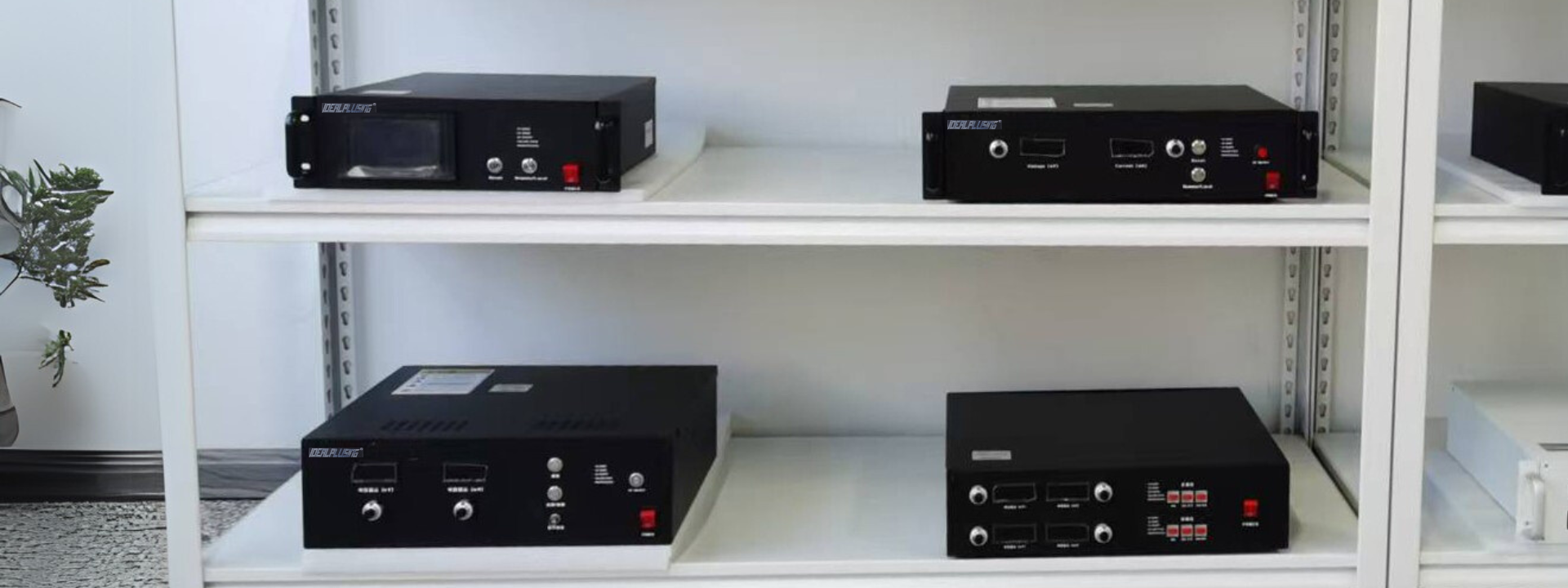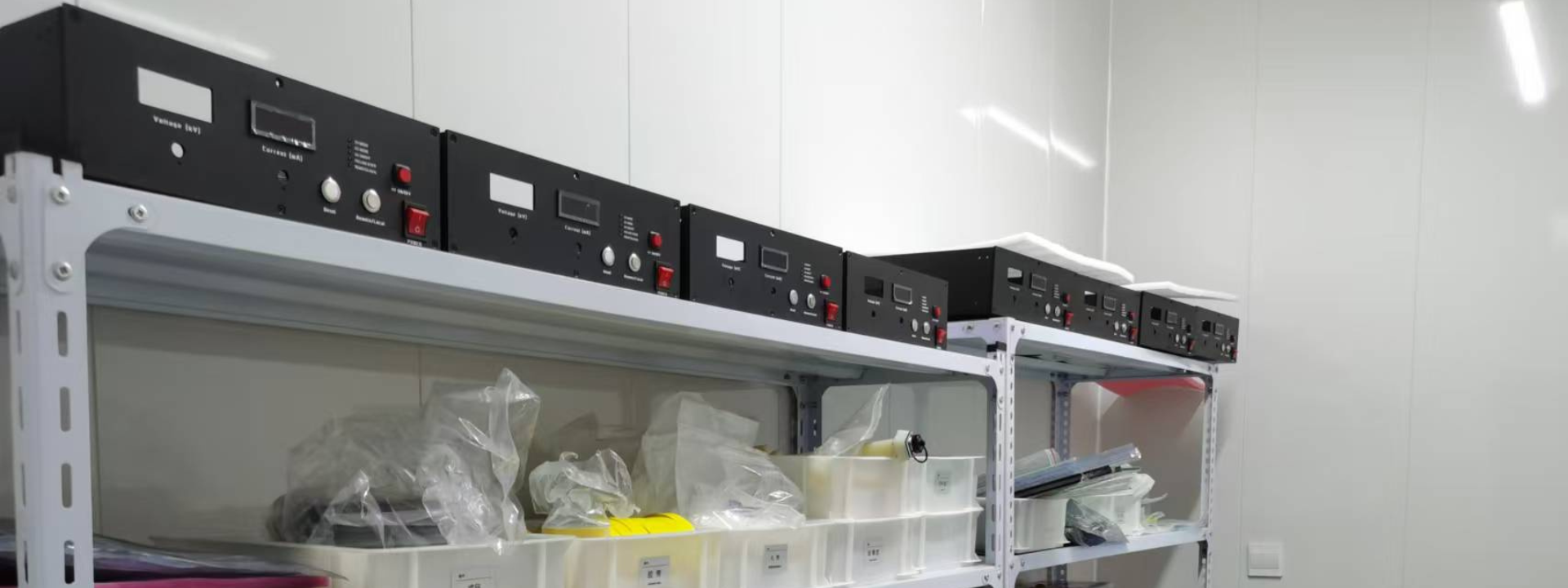High-voltage DC power supply

High-voltage DC power supply have extremely critical applications in many modern scientific and technological fields, such as power transmission, electronic equipment manufacturing, high-energy physics experiments, and medical devices. The quality of its performance directly affects the operating efficiency, stability, and safety of related systems. With the rapid development of science and technology, higher requirements are placed on high-voltage DC power supplies, such as higher voltage stability, smaller size, and better insulation performance. As an efficient method for preparing nanofiber materials, electrospinning technology has gradually emerged in the field of high-voltage DC power supplies in recent years, providing new ideas and effective solutions to solve many problems faced by traditional high-voltage DC power supplies.
Electrospinning process
During the electrospinning process, the high-voltage electrostatic field charges and deforms the polymer solution or melt, forming a suspended conical droplet at the end of the nozzle. When the charge repulsion on the surface of the droplet exceeds its surface tension, a small polymer liquid stream, referred to as a "jet", will be ejected at high speed on the surface of the droplet. These jets undergo high-speed stretching, solvent volatilization, and solidification by the electric field force within a short distance, and are finally deposited on the receiving electrode to form polymer fibers.
The electrospinning device is mainly composed of three parts: a high-voltage power supply, a nozzle and a liquid supply device, and a fiber receiving device, as shown in the figure below. The high-voltage power supply generally uses a DC power supply that can generate thousands to tens of thousands of volts to generate a high-voltage electric field, so that the liquid is charged and polarized, and finally forms a jet.
The liquid supply device is a container with a capillary at one end (such as a syringe, etc.), which contains a polymer solution or melt. In addition, with the improvement of experimental requirements, liquid flow control systems are also gradually adopted, so that the flow rate of the liquid can be controlled more accurately.
The fiber receiving device is a metal receiving plate set at the opposite end of the nozzle, which can be a rotating drum or a layer of aluminum foil on a metal plate. The receiving device is grounded with a wire as the negative electrode and is connected to the negative electrode of the high-voltage power supply.
Development of electrospinning technology
The term "electrospinning" comes from "electrospinning" or the earlier "electrostatic spinning". In 1934, Formhals invented an experimental device for preparing polymer fibers using electrostatic force and applied for a patent. His patent announced how the polymer solution forms a jet between electrodes.
This is the first patent that describes in detail the use of high-voltage static electricity to prepare fiber devices, and is recognized as the beginning of electrostatic spinning technology to prepare fibers. However, from a scientific basis, this invention can be regarded as a special case of electrostatic atomization or electrospray, and its concept can be traced back to 1745. Electrospinning is a special form of electrostatic atomization of polymer fluids. At this time, the atomized substances are not tiny droplets, but polymer tiny jets, which can run for a considerable distance and eventually solidify into fibers.
The biggest difference between electrostatic atomization and electrospinning is that the working media used by the two are different. Electrostatic atomization uses low-viscosity Newtonian fluids, while electrospinning uses higher-viscosity non-Newtonian fluids. In this way, the research on electrostatic atomization technology also provides a certain theoretical basis and foundation for the electrospinning system. In-depth research on the electrospinning process involves fields such as electrostatics, electrohydrodynamics, rheology, and aerodynamics.
Current Status and Prospects of Electrospinning Technology
The preparation of nanofiber materials through electrospinning technology is one of the most important academic and technical activities in the field of materials science and technology in the world in the past decade.
Electrospinning has become one of the main ways to effectively prepare nanofiber materials due to its advantages such as simple manufacturing equipment, low spinning cost, a wide variety of spinnable materials, and controllable process. Electrospinning technology has prepared a wide variety of nanofibers, including organic, organic/inorganic composite and inorganic nanofibers.
However, the use of electrospinning technology to prepare nanofibers still faces some problems that need to be solved.
First, in the preparation of organic nanofibers, the natural polymers used for electrospinning are still very limited, and the research on the structure and performance of the resulting products is not perfect. The application of the final products is mostly only in the experimental stage, especially the industrial production of these products still has major problems.
Secondly, the performance of electrospun organic/inorganic composite nanofibers is not only related to the structure of inorganic nanoparticles, but also to the aggregation mode and synergistic performance of nanoparticles, the structural properties of the polymer matrix, the interface structure properties of the particles and the matrix, and the processing composite process.
How to prepare high-performance and multifunctional composite nanofibers that meet the needs is the key to the research. In addition, the research on electrospinning inorganic nanofibers is basically in the initial stage. Inorganic nanofibers have potential uses in many fields such as high-temperature filtration, high-efficiency catalysis, biological tissue engineering, optoelectronic devices, and aerospace equipment. However, the greater brittleness of electrospinning inorganic nanofibers limits their application performance and scope. Therefore, the development of flexible and continuous inorganic fibers is an important topic.
Electrospinning technology has played a very important role in the construction of one-dimensional nanostructured materials. Nanofiber materials with diverse structures have been successfully prepared using electrospinning technology. Through different preparation methods, such as changing the nozzle structure and controlling the experimental conditions, solid, hollow, core-shell ultrafine fibers or spider web-like two-dimensional fiber membranes can be obtained; by designing different receiving devices, single fibers, fiber bundles, highly oriented fibers or randomly oriented fiber membranes can be obtained.
Electrospinning technology still faces some challenges in the regulation of fiber structure

First, in order to realize the industrial application of electrospun fibers, it is necessary to obtain short fibers or continuous nanofiber bundles. The preparation of oriented fibers provides an effective way to solve this problem, but there is still a long way to go. Future work will try to straighten and orient the fibers as much as possible by improving the nozzle, receiving device, and adding auxiliary electrodes to obtain an oriented fiber array with excellent comprehensive performance.
Secondly, as a new research field of electrospun nanofibers, the research on nano spider webs is still in its early stages, and the theoretical analysis and model establishment of the nano spider web formation process still need to be further studied. In addition, in order to improve the application performance of electrospun fiber membranes in the field of ultra-fine filtration, the diameter of the fibers must be reduced.
How to reduce the average fiber diameter to 20nm is a challenge facing electrospinning technology; in order to improve the application performance of fibers in sensors, catalysis and other fields, it is an effective method to increase the specific surface area of fibers by preparing nanofibers with porous or hollow structures, but further research is still needed.
With the development of nanotechnology, electrospinning, as a simple and effective new processing technology for producing nanofibers, will play a huge role in biomedical materials, filtration, protection, catalysis, energy, optoelectronics, food engineering and cosmetics (see the figure below):
Main application fields of electrospun nanofibers
When electrospun nanofibers are successfully applied to more and more fields, the disadvantages of low electrospinning fiber manufacturing efficiency are also highlighted. Therefore, new electrospinning devices and methods continue to emerge.
At present, electrospinning mass production technology has gradually become a common problem faced by academia and industry. The key to increasing the output of electrospun fibers is to stably and accurately increase the number of polymer microjets generated by the electrostatic field force at the nozzle.
Therefore, current research mainly focuses on the nozzle-free multi-jet method and the multi-jet method. Researchers have developed technologies such as magnetojet technology, bionic jet jet technology, tipless nozzle multi-jet technology, and combined multi-jet spinning technology.
Although researchers from various countries have done a lot of meticulous work in the scientific and technological field of electrospinning, involving many fields such as materials, chemistry, physics, biology, and medicine, and have achieved remarkable results, the current level of nanofiber research is still a certain distance away from practical applications, which requires researchers to continue to carry out more in-depth research.
High-voltage DC power supply is expected in the future
The application of electrospinning technology in the field of high voltage DC power supply has shown great potential and broad prospects. By preparing nanofiber materials with unique properties, it has achieved remarkable results in insulation optimization, energy storage improvement, and electrode material innovation of high-voltage DC power supplies, providing an effective way to solve many technical problems faced by traditional high-voltage DC power supplies. solution.
However, the current application of electrospinning technology in high-voltage DC power supplies is still in the development stage and still faces some challenges, such as the optimization of large-scale production processes and the further improvement of the compatibility of nanofiber materials with existing power systems. However, we believe there will be better developments in the future.







